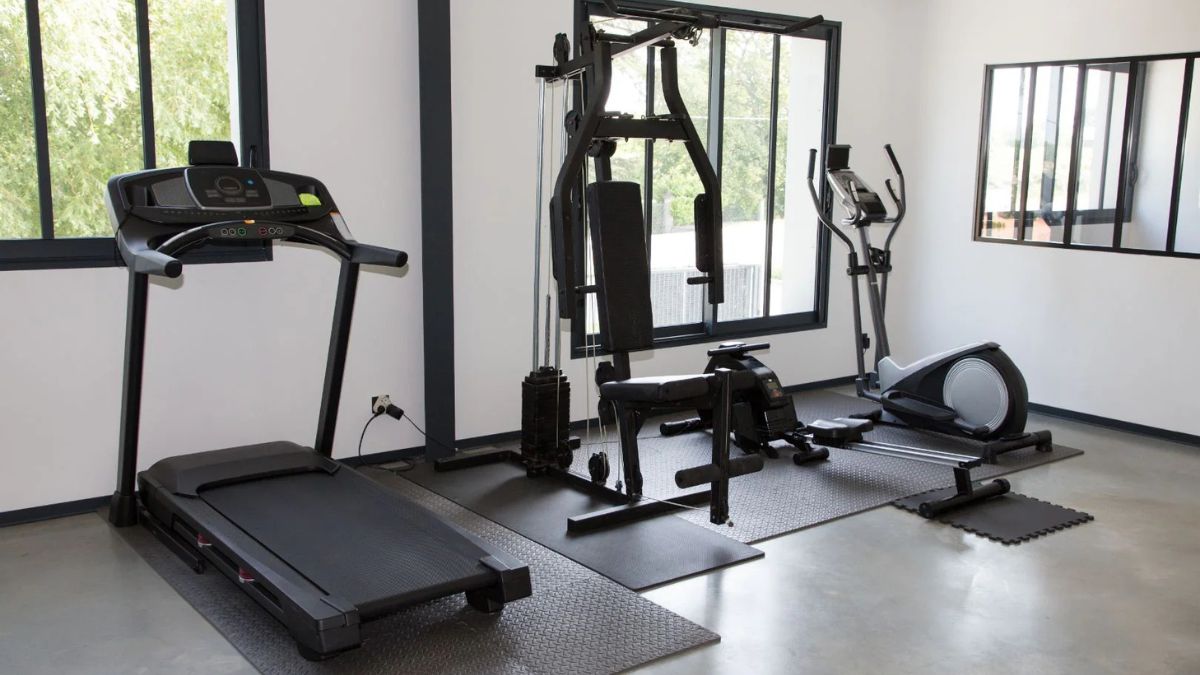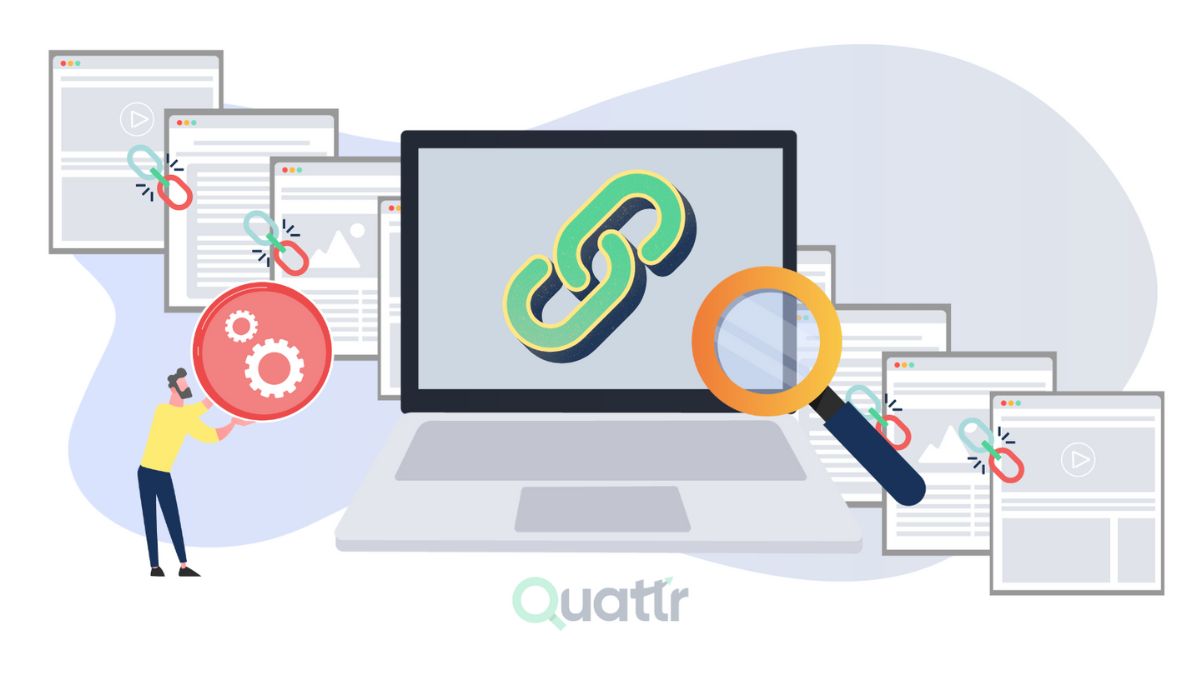TECHNOLOGY
Creating Your Perfect Home Gym Space: A Comprehensive Guide

In today’s busy world, having a dedicated fitness space at home has moved from luxury to necessity for many. A well-designed home gym eliminates commute time, membership fees, and the need to wait for equipment. Whether you’re converting a spare bedroom, utilizing basement space, or transforming part of your garage, creating an effective home gym requires thoughtful planning. Let’s explore how to build a functional fitness sanctuary that keeps you motivated and supports your health goals.
Assessing Your Space
The first step in creating your home gym is evaluating available space:
- Measure your available area carefully, accounting for ceiling height
- Consider flooring needs and structural support for heavy equipment
- Assess ventilation, temperature control, and natural light
- Evaluate electrical outlet locations for any powered equipment
- Think about noise transfer to other parts of your home or to neighbors
Even a modest area can become an effective workout space with proper planning. Remember that a 10×10 foot area can accommodate a surprisingly complete setup including basic strength and cardio equipment.
Defining Your Fitness Goals
Before purchasing equipment, clarify what you want to achieve:
- Building strength requires different tools than cardio-focused workouts
- Flexibility and mobility work needs open floor space
- Sports-specific training might require specialized equipment
- General fitness can be achieved with versatile, multi-purpose gear
Your goals should drive your equipment choices rather than the latest trends or flashy marketing. This focused approach ensures every piece earns its space in your gym.
Essential Equipment Considerations
While equipment needs vary based on your goals, consider these versatile options:
Strength Training Foundations
A quality weight bench forms the cornerstone of many home gyms. Look for adjustable options that support multiple exercises and have sufficient weight capacity for your needs.
Dumbbells provide incredible versatility in a compact form. Consider adjustable dumbbells that replace multiple pairs if space is limited.
Resistance bands offer progressive resistance, portability, and can supplement or replace traditional weights for many exercises.
A pull-up bar or multi-function power tower maximizes vertical space while enabling crucial pulling movements.
Cardio Options
Consider space-efficient cardio equipment that aligns with activities you enjoy:
- Foldable treadmills can be stored when not in use
- Stationary bikes typically have smaller footprints than other cardio machines
- Rowing machines provide full-body workouts but require floor space
- Jump ropes offer intense cardio benefits with minimal space requirements
Flooring Solutions
Proper flooring protects both your equipment and the structure beneath:
- Rubber tiles or mats absorb impact and protect floors
- Interlocking foam tiles provide cushioning for bodyweight exercises
- Horse stall mats offer durable, cost-effective solutions for heavier weights
- Consider thicker options (15mm+) beneath areas where weights might be dropped
Organizing Your Home Gym
Thoughtful organization maximizes functionality and workout enjoyment:
- Create zones for different activities (strength, cardio, recovery)
- Install mirrors to check form and create a sense of spaciousness
- Use vertical storage solutions like wall-mounted racks and hooks
- Consider equipment that can be folded or rolled away when not in use
- Position your weight bench centrally with adequate clearance for various movements
Maintenance and Cleanliness
Keeping your home gym clean is essential for both equipment longevity and workout enjoyment:
- Invest in a quality floor mat cleaner specifically designed for rubber and foam surfaces
- Wipe down equipment after use to prevent sweat buildup and corrosion
- Establish a weekly deep-cleaning routine for all surfaces
- Use appropriate cleaners for different materials (metal, upholstery, electronic displays)
- Keep your floor mat cleaner and cleaning supplies easily accessible to encourage regular maintenance
A clean gym is not just more hygienic—it’s more motivating. Nothing diminishes workout enthusiasm faster than dirty equipment or stale odors.
Adding Motivational Elements
The most effective home gyms incorporate features that keep you engaged:
- Install a TV or tablet mount for following workout videos or entertainment
- Create a dedicated sound system or speaker setup
- Use inspiring artwork or motivational quotes
- Track progress with a whiteboard or wall chart
- Consider smart mirrors or fitness technology that provides feedback
Budget Considerations
Building a home gym doesn’t require immediate massive investment:
- Start with versatile basics like a quality weight bench, resistance bands, and adjustable dumbbells
- Add equipment gradually as your fitness progresses
- Look for quality used equipment from gym closures or online marketplaces
- Focus on durability rather than features you may never use
- Remember that home gyms pay for themselves over time compared to commercial gym memberships
Safety First
Ensure your home gym remains safe and functional:
- Regularly inspect equipment for wear or damage
- Keep adequate space between machines and walls
- Store weights properly when not in use
- Consider proper ventilation and temperature control
- Keep a first aid kit easily accessible
Final Thoughts
Creating a home gym is a powerful investment in your health and wellbeing. By thoughtfully designing your space around your specific goals and available area, you’ll build a fitness environment that eliminates excuses and encourages consistent training.
Remember that the perfect home gym evolves over time. Start with essential, versatile equipment and basic conditioning tools, then expand as your fitness journey progresses. With the right equipment, proper maintenance using specialized products like floor mat cleaner, and an inspiring layout, the convenience and privacy of having your perfect workout space just steps away will transform your relationship with fitness for years to come.
TECHNOLOGY
Oncepik vs. Other Blogging Tools: What Sets It Apart?

Introduction to Oncepik
Are you on the hunt for a blogging tool that stands out from the crowd? Enter Oncepik—a dynamic platform designed to elevate your blogging experience. Whether you’re a seasoned writer or just starting, finding the right tools can make all the difference. You need something that not only simplifies your workflow but also enhances creativity and engagement with your audience.
Oncepik is making waves in the blogging community, offering unique features tailored for content creators who want to focus on what they do best—writing compelling stories. With so many options available, it’s easy to feel overwhelmed. So why should Oncepik be at the top of your list? Let’s dive deeper into its standout features and see how it stacks up against other popular blogging tools in today’s digital landscape.
Features and Benefits of Oncepik
Oncepik offers a user-friendly interface that simplifies the blogging experience. With its intuitive design, even beginners can navigate easily and start creating content right away.
The platform boasts powerful SEO tools to help your blog rank higher in search engines. Oncepik’s built-in keyword suggestions ensure you’re always targeting the right audience.
Content organization is key for any blogger. Oncepik allows users to categorize posts effortlessly, making it easy to manage and retrieve articles whenever needed.
Additionally, collaboration features enable teams to work together seamlessly. Whether you’re brainstorming ideas or editing drafts, real-time updates keep everyone on the same page.
Analytics provide valuable insights into reader behavior. Understanding what resonates with your audience helps refine strategies and improve engagement over time.
Comparison with Other Blogging Tools
When comparing Oncepik to other blogging tools, it quickly becomes clear where its strengths lie. Unlike traditional platforms that focus solely on text creation, Oncepik integrates multimedia seamlessly. This makes your posts more engaging.
Many tools offer templates, but Oncepik goes further with customizable options that cater to individual branding needs. Users can tweak designs effortlessly, ensuring their voice shines through.
Collaboration is another area where Oncepik excels. While some platforms limit user access or features based on subscription tiers, Oncepik promotes teamwork by allowing multiple users to edit in real-time without complications.
Analytics also set it apart; built-in insights help track engagement and optimize content strategies effectively. Other tools often require third-party integrations for this feature.
The intuitive interface reduces the learning curve significantly compared to competitors known for their complex dashboards. That means writers can focus more on creativity and less on navigating around obstacles.
User Reviews and Testimonials
Users have taken to social media and forums to share their experiences with Oncepik. Many praise its intuitive interface, noting that it simplifies the blogging process.
One user mentioned how quickly they set up their blog without any technical skills. They found the drag-and-drop functionality particularly helpful for customizing their layout.
Another reviewer highlighted the robust analytics features. This tool allows bloggers to track performance effortlessly and adjust strategies in real time.
Testimonials also emphasize customer support. Users report quick responses from the team when they encounter issues or need guidance.
A common theme among reviews is satisfaction with content scheduling options. Bloggers appreciate being able to plan posts ahead of time, ensuring consistent engagement with their audience.
Success Stories of Oncepik Users
Oncepik has transformed the way many bloggers approach their craft. Users have shared how the platform’s intuitive design streamlined their writing process, allowing them to focus on creativity rather than technicalities.
One blogger recounted launching a food blog that gained traction quickly. With Oncepik’s SEO tools at her fingertips, she optimized her posts effortlessly and attracted thousands of followers within months.
Another user emphasized community support as a game-changer. The built-in networking features connected him with like-minded individuals, leading to collaborations that expanded his audience significantly.
A freelance writer noted increased productivity after integrating Oncepik into her routine. By organizing ideas and drafts in one place, she met deadlines more consistently while maintaining quality content.
These stories reflect just a glimpse of what is possible when leveraging Oncepik for blogging success.
Pricing and Plans Offered by Oncepik
Oncepik offers a variety of pricing plans designed to cater to different user needs. Whether you’re just starting your blogging journey or running an established site, there’s something for everyone.
Their basic plan is budget-friendly and perfect for beginners. It includes essential features that help streamline the blogging process without overwhelming users with complexity.
For those looking for more advanced capabilities, Oncepik provides premium plans. These include additional tools like SEO optimization, analytics insights, and enhanced collaboration options.
Each tier comes with a free trial period, allowing potential users to explore the platform before making any financial commitments. This flexibility ensures that bloggers can find the right fit based on their unique requirements and goals.
With transparent pricing structures and no hidden fees, Oncepik stands out as an accessible choice in the crowded market of blogging tools.
Conclusion: Why Oncepik is the Ultimate Blogging Tool
When evaluating blogging tools, Oncepik stands out for several compelling reasons. First and foremost is its user-friendly interface that allows both beginners and seasoned bloggers to navigate effortlessly. The platform integrates various features designed to streamline the writing process, optimize SEO, and enhance reader engagement.
Oncepik’s unique selling point lies in its comprehensive suite of tools tailored specifically for bloggers. This includes advanced analytics that provide insights into audience behavior, content performance tracking, and keyword suggestions aimed at improving search engine rankings. These capabilities make it easier to craft content strategies that resonate with target audiences.
User reviews consistently highlight the efficiency brought by Oncepik’s automation features. Bloggers can spend less time on technical details and more on creativity. Many users have noted significant improvements in their workflow after switching from other platforms.
Success stories from Oncepik users reveal impressive results—ranging from increased traffic to enhanced brand visibility online. Many bloggers attribute their growth directly to leveraging Oncepik’s powerful functionalities which help them create high-quality content consistently.
As for pricing plans, Oncepik offers flexible options suitable for different budgets. Whether you’re a hobbyist or operate a full-fledged business blog, there’s an appropriate plan available without breaking the bank.
With all these factors combined—ease of use, robust features tailored for blogging success, positive user experiences, tangible results seen by real people—it’s easy to see why many consider Oncepik as the ultimate tool for modern-day blogging needs.
TECHNOLOGY
Libnk vs. Traditional Linking Methods: Which is Right for You?

In the ever-evolving world of SEO, linking remains a cornerstone strategy that can make or break your online presence. With search engines continually refining their algorithms, understanding the best ways to build links is crucial for anyone looking to enhance their website’s visibility. But with countless methods available, how do you know which one is right for you? Enter Libnk—a groundbreaking approach that challenges traditional linking methods and promises fresh opportunities for marketers and businesses alike. Let’s dive into the nuances of linking in SEO and discover whether Libnk might just be the game-changer you’ve been searching for.
The Importance of Linking in SEO
Linking plays a pivotal role in the world of SEO. It’s more than just connecting one page to another; it’s about creating pathways for search engines and users alike.
When done right, links help search engines understand the structure of your website. They indicate which pages hold authority and relevance. The better your linking strategy, the higher your chances of ranking well.
Moreover, links enhance user experience by guiding visitors to relevant content. A well-placed link can keep users engaged longer, reducing bounce rates and encouraging them to explore more.
Links also foster relationships within online communities. When you link out to reputable sites or get linked back from quality domains, it builds trust with both audiences and search algorithms.
In an increasingly competitive digital landscape, mastering linking is essential for visibility and credibility in SEO strategies.
Traditional Linking Methods – Pros and Cons
Traditional linking methods have been the backbone of SEO for years. Backlinks from reputable sites can boost authority and improve rankings in search engine results.
One major advantage is that established techniques, like guest blogging and directory submissions, are well-understood by marketers. Many businesses have successfully leveraged these methods to gain visibility and drive traffic.
However, there are downsides. The process can be time-consuming and often requires significant effort without guaranteed results. Additionally, spammy links or low-quality sources may harm a site’s reputation.
Moreover, traditional methods can sometimes feel outdated in today’s fast-paced digital landscape. Competition is fierce; standing out has become increasingly challenging with conventional tactics alone.
This creates a need for innovative solutions that keep pace with changing algorithms and user behaviors in an evolving online environment. Enter new alternatives that offer fresh perspectives on how we link content effectively today.
Libnk – A Revolutionary New Linking Method
Libnk is transforming the way we think about linking in digital marketing. This innovative tool brings a fresh approach to an age-old practice, allowing businesses to streamline their SEO efforts.
Unlike traditional methods that often rely on static links, Libnk offers dynamic and adaptive solutions. It enables users to create smart links that respond based on user behavior and preferences.
This means your audience receives tailored content without the hassle of constant updates or manual adjustments. The flexibility of Libnk sets it apart from conventional linking strategies, which can be rigid and outdated.
With its intuitive interface, even those new to SEO can easily navigate the platform. It’s designed for efficiency while maximizing engagement through optimized link sharing.
As you explore options for improving your online presence, consider how Libnk could elevate your strategy beyond traditional limits.
How Does Libnk Work?
Libnk operates by simplifying the linking process for businesses and content creators. It utilizes a unique algorithm that analyzes user behavior and engagement metrics.
When you create a link with Libnk, it generates dynamic URLs tailored to specific audiences. This allows marketers to track how different segments interact with their content in real-time.
The platform also integrates seamlessly with existing tools and analytics systems. Users can easily monitor click rates, conversion statistics, and other key performance indicators through an intuitive dashboard.
By leveraging advanced data analytics, Libnk enables users to optimize their linking strategies effectively. Each link becomes not just a pathway but a strategic asset aimed at improving SEO outcomes.
These features collectively enhance the effectiveness of digital marketing campaigns while providing valuable insights into audience preferences. Thus, Libnk transforms traditional linking methods into powerful drivers of growth and engagement.
Benefits of Using Libnk for SEO
Libnk brings a fresh approach to linking that can enhance your SEO strategy significantly. One of its standout features is the ability to create dynamic links tailored for various audiences. This means you can optimize content based on user behavior and preferences, driving more relevant traffic.
Another advantage lies in Libnk’s analytics capabilities. You gain real-time insights into link performance, allowing for quick adjustments and improvements. Understanding what works best helps sharpen your overall marketing efforts.
Additionally, Libnk simplifies the linking process by automating tasks that traditionally consume time and resources. This efficiency lets teams focus on creating quality content rather than getting lost in management details.
With enhanced flexibility and control over links, businesses can tailor their strategies effectively, ensuring they stay ahead of competitors in an ever-evolving digital landscape.
Is Libnk Right for Your Business?
Choosing the right linking method can be a game-changer for your business. If you prioritize innovation and efficiency, Libnk might align perfectly with your goals.
Consider your current strategy. Are traditional methods yielding the desired results? If not, it may be time to explore alternatives that offer dynamic solutions.
Libnk’s unique features cater to various industries. Whether you’re in e-commerce or content creation, its adaptability could fit seamlessly into your existing framework.
Moreover, if data-driven decisions are at the forefront of your operations, Libnk’s analytics capabilities provide valuable insights. This means you can refine strategies based on real-time performance metrics.
Evaluate how much time and resources you spend on linking efforts now. Switching to Libnk could streamline processes significantly while enhancing visibility across platforms.
Exploring this innovative option could lead to better engagement and higher conversion rates for any forward-thinking business.
Conclusion
Choosing the right linking method is crucial for your SEO strategy. Traditional methods have their benefits, but they also come with limitations. Libnk presents an innovative approach that can enhance your linking game. It offers unique features and flexibility that may align better with modern digital marketing needs.
Evaluating whether Libnk is right for you depends on your specific goals and resources. If you’re looking to streamline your linking process while gaining valuable insights into user behavior, it might be worth exploring further.
As the digital landscape evolves, staying informed about new tools like Libnk could give you a competitive edge in optimizing your online presence. Investing time in understanding these options will ultimately pay off as you enhance visibility and drive more traffic to your site.
TECHNOLOGY
Drop MMS vs. Traditional SMS: Which One is Right for You?

In today’s fast-paced digital world, communication has evolved significantly. As businesses and individuals seek more effective ways to connect, two powerful messaging options have emerged: MMS and SMS. While both serve the purpose of sending text messages, they offer unique features that can impact how you engage with your audience. Are you considering which option is best for your marketing strategy or personal communication? This guide will explore the intricacies of drop MMS versus traditional SMS so you can make an informed choice on what fits your needs perfectly. Let’s dive in!
Overview of MMS and SMS
SMS, or Short Message Service, is the classic method of sending text messages. It allows users to send concise communications up to 160 characters. This makes SMS ideal for quick updates, alerts, and reminders.
MMS, which stands for Multimedia Messaging Service, takes messaging a step further by enabling the transmission of multimedia content. With MMS, you can share images, videos, audio files, and even longer text messages without the character restrictions that come with SMS.
Both services utilize mobile networks but differ in their capabilities. While SMS focuses on simplicity and speed in delivering text-based information, MMS offers a richer experience by incorporating visual elements that can enhance your message’s impact.
The Difference Between MMS and SMS
MMS, or Multimedia Messaging Service, and SMS, Short Message Service, serve different purposes in mobile communication.
SMS is designed for text-only messages. It allows you to send concise information with a limit of 160 characters per message. This straightforward approach makes it ideal for quick updates or alerts.
On the other hand, MMS expands your messaging capabilities significantly. With MMS, you can include images, videos, and audio clips along with text. This multimedia aspect enhances engagement and storytelling.
Another key difference lies in cost structures. Sending an SMS typically costs less than an MMS due to its simplicity and limited data usage.
Compatibility also varies between the two services. While almost all devices support SMS without issue, not every device may handle MMS effectively depending on network conditions or limitations.
Understanding these differences helps determine which option best fits your communication needs.
When to Use MMS vs. SMS
Choosing between MMS and SMS depends largely on your messaging goals. If you need to convey rich content, like images or videos, opt for MMS. It’s perfect for marketing campaigns that require visual appeal.
For quick updates or reminders, SMS is the way to go. Its simplicity ensures that messages are delivered swiftly and read promptly. Think of transactional alerts or appointment confirmations—these are best suited for traditional text.
Consider your audience as well. Younger demographics may respond better to multimedia messages, while older generations might prefer straightforward texts without distractions.
If you’re working with limited data plans or have recipients in low-connectivity areas, SMS remains a reliable choice. However, when capturing attention is crucial, don’t hesitate to drop an MMS into the mix for a more engaging experience.
Advantages of Using MMS
MMS, or Multimedia Messaging Service, offers a rich way to communicate. It allows users to send images, videos, and audio clips alongside text. This creates a more engaging experience for the recipient.
One major advantage is increased engagement rates. Messages that include visuals tend to capture attention faster than plain text. This makes MMS ideal for marketing campaigns where visual appeal can drive action.
Additionally, MMS supports storytelling in a more compelling manner. Brands can showcase products through high-quality images or short video clips rather than relying solely on written descriptions.
Another benefit lies in personalization opportunities. Customizing messages with multimedia content helps businesses connect emotionally with their audience. People are drawn to unique experiences that resonate personally.
MMS has higher delivery rates compared to traditional SMS when it comes to captivating content—making it easier for your message not just to be seen but also remembered.
Limitations of Using MMS
MMS, while versatile, comes with its set of limitations. One significant drawback is the cost. Sending multimedia messages often incurs higher charges compared to traditional SMS. This can add up quickly for businesses sending mass communications.
Another consideration is compatibility. Not all mobile devices support MMS seamlessly. Some users might not receive your carefully crafted images or videos due to outdated technology or specific network issues.
Delivery times can also vary greatly with MMS. Large files may take longer to send and receive, leading to potential delays in communication that could affect time-sensitive interactions.
Furthermore, data connectivity plays a critical role in MMS delivery. Users without reliable internet access might miss out on important content altogether, limiting engagement and reach significantly.
How to Choose Between MMS and SMS
Choosing between MMS and SMS comes down to your messaging needs. Consider the content you want to share. If it’s purely text, SMS is a straightforward choice.
However, if you need to convey a message that includes images or videos, MMS is essential. Think about engagement as well. Visuals tend to grab attention more effectively than plain text.
Next, consider your audience’s preferences. Some people may prefer concise texts while others might appreciate rich media experiences.
Cost can also be a factor in your decision-making process. Typically, sending an MMS costs more than an SMS due to data usage.
Think about delivery rates and compatibility with devices—SMS works on all phones while some older models may not support MMS fully. Balancing these factors will help clarify which option best suits your communication goals.
Conclusion
When it comes to choosing between drop MMS and traditional SMS, understanding the key differences is essential. Each option has its unique strengths and weaknesses.
If you’re looking to engage your audience with rich media content like images or videos, drop MMS might be the way to go. It offers a dynamic approach that can capture attention quickly. However, if all you need is a simple message without any frills, SMS gets the job done efficiently.
Consider your audience’s preferences as well as your messaging goals when deciding which method suits you best. Both options have their place in communication strategies today. Whether you’re sending out promotional materials or personal messages, evaluating each format will help maximize engagement and effectiveness.
-

 TECHNOLOGY6 months ago
TECHNOLOGY6 months agoTop 10 Must-Read Stories from Kristen Archives You Can’t Miss
-

 TECHNOLOGY11 months ago
TECHNOLOGY11 months agoSky Bri Net Worth Revealed: How She Built Her Financial Empire
-

 TOPIC1 year ago
TOPIC1 year agoBasement Renovation Contractors: How They Tackle Structural Issues During Renovations
-

 TOPIC8 months ago
TOPIC8 months ago5 Reasons the //Vital-Mag.Net Blog Dominates Lifestyle
-

 TOPIC6 months ago
TOPIC6 months agoTop 10 Articles from the ://Vital-Mag.net Blog That You Can’t Miss
-

 CRYPTO10 months ago
CRYPTO10 months agoCrypto30x.com Review: Is It the Right Platform for You?
-

 BUSINESS6 months ago
BUSINESS6 months agoTraceLoans Explained What You Need to Know
-

 ENTERTAINMENT3 months ago
ENTERTAINMENT3 months agoNHentai.NEF: Navigating the Popular Hentai Archive with Ease
